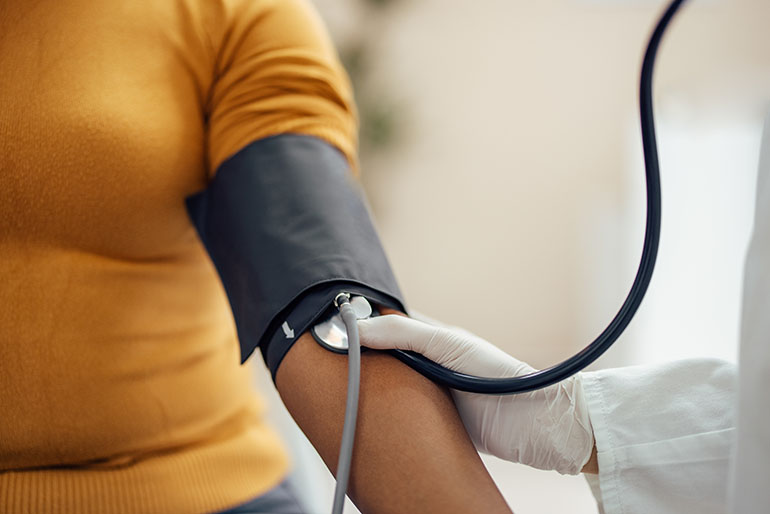Join Our eNewsletter!
Subscribe to our monthly newsletter to receive encouraging advice to help you lead a healthy lifestyle.

The Link Between Potassium and Blood Pressure
Known as the “silent killer” because it often presents without symptoms, high blood pressure is the leading cause of heart attacks, heart disease, and stroke.
Suppose you're one of the 116 million Americans diagnosed with hypertension or high blood pressure (a reading higher than 120/80.). In that case, your doctor may advise you to increase your intake of foods rich in potassium.

How Potassium Can Improve Your Blood Pressure
You need both potassium and sodium for your body to function correctly.
Potassium is an electrolyte that helps your nerves function and muscles contract, and it regulates your heartbeat. It also moves nutrients into your cells and removes waste products.
You also need a small amount of sodium to carry out essential bodily functions, including maintaining a proper balance of water and minerals; however, most people consume too much of it in the form of salt, a leading cause of developing hypertension. It's estimated that most Americans consume approximately 1.5 teaspoons of salt daily, which is far more than our bodies need. Processed foods and meals served at restaurants are often high in sodium.
Eating foods high in potassium counteracts some of the harmful effects of having too much sodium in our bodies. The more potassium you consume, the more sodium you lose when you urinate. Potassium also helps to ease tension in your blood vessel walls, which also has a positive effect on your blood pressure readings.
A Banana A Day Helps Keep the Doctor Away

The recommended amount of potassium is 4,700 milligrams each day. However, it is estimated that most Americans barely manage to consume half of that.
Fruits, vegetables, and some seeds contain high amounts of potassium. Bananas, for example, are an excellent source of potassium, containing approximately 425 milligrams. But if bananas aren't your thing, there are plenty of other potassium-rich options to choose from, including:
- Water chestnuts
- Broccoli
- Spinach
- Apricots
- Fat-free yogurt
- Cantaloupe
- Sweet potatoes
- Avocados
- Lima beans
- Mushrooms
- Tuna
- Halibut
Potassium Is Only One Piece of the Puzzle

Choosing foods rich with potassium is one step in managing your blood pressure, but doing so should be combined with other habits.
- Monitor your blood pressure - If you have been diagnosed with hypertension, you might consider purchasing a blood pressure cuff to check your blood pressure at home. Being aware of your blood pressure numbers is an important first step.
- Get plenty of exercise - Find a physical activity you enjoy and stick with it! Even 30 minutes of walking a day can make a difference. Exercise makes your heart stronger, so it doesn't have to work as hard, lowering your blood pressure.
- Keep stress in check - Stress causes our bodies to move into “fight or flight” mode, making our hearts beat faster and constricting our blood vessels. A little stress is OK, but over time, too much of it can lead to health issues, including high blood pressure.
- Manage your medications - If you've been prescribed high blood pressure medications, take them regularly and as directed. Also, be mindful of over-the-counter medications, as some can counteract the effects of your prescribed medication.
- Maintain a healthy weight - Excess weight makes your heart work harder and puts you at increased risk of developing high blood pressure. Losing even 10 pounds can positively impact your blood pressure numbers.
Too Much of a Good Thing
While increased potassium can help manage hypertension, too much can be harmful, especially for people with kidney disorders. If your kidneys can't remove the potassium from your blood, you may experience such high potassium symptoms as feeling nauseated, having an irregular pulse, or fainting.
Work With Your Doctor
If you've been diagnosed with high blood pressure or are at risk for developing it, consult your doctor about ways to manage your condition. Remember to be patient; blood pressure numbers don't change overnight. It requires a consistent effort to see sustainable change. Once you get your blood pressure under control, maintaining healthy numbers will become easier.








